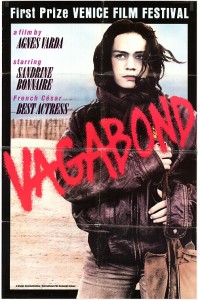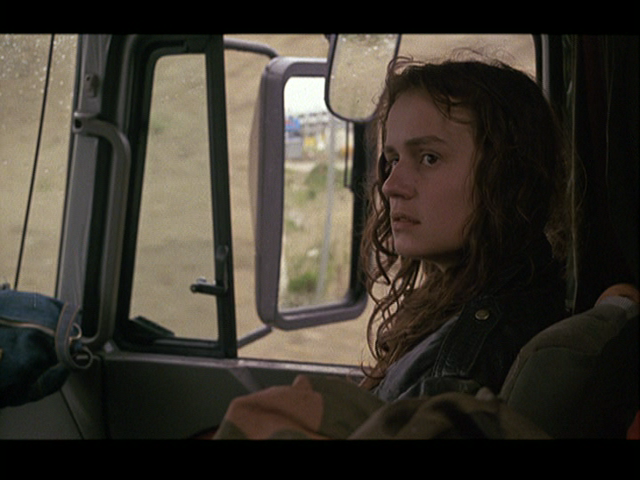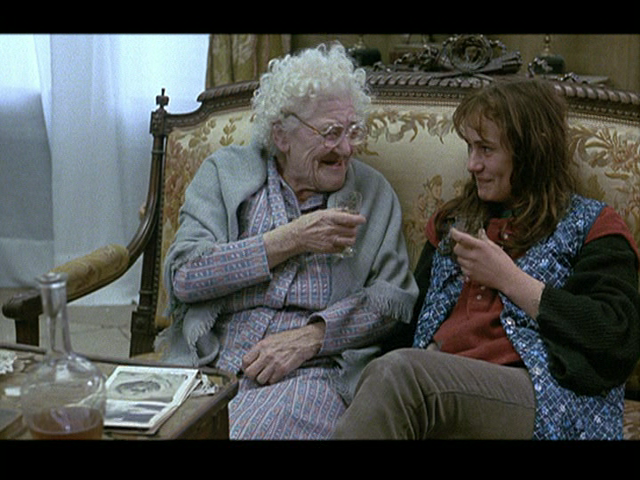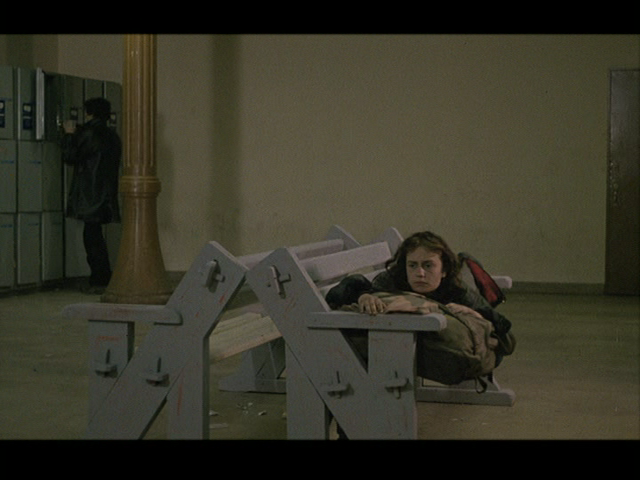Vagabond (1985)
“Female drifters, all alike: just loafers and men-chasers.”
|
Synopsis: |
|
Genres, Themes, Actors, and Directors:
Review: Of these three films, Vagabond is ultimately the most successful and satisfying, thanks primarily to Sandrine Bonnaire’s compelling, brave performance. As in her screen debut (playing teenage Suzanne in 1983’s A Nos Amours), Bonnaire invests her character here with an air of studied yet vulnerable insouciance; in some ways, Mona is simply a radical, tragic extension of Suzanne. To her credit, however, Varda doesn’t try to frame Mona as overly sympathetic — she’s bitchy and conniving when she needs to be, doing whatever it takes to make it from day to day with a minimum of effort; she lacks overt initiative, and often fails to take advantage of the kindnesses offered to her. Although we never learn exactly why Mona is rebelling against even the most minimal strictures of society, it’s clear from the opening shot of her corpse that such an approach is doomed. Throughout the film, she’s bedraggled, smelly, and occasionally feral — yet always fascinating and/or frustrating to those around her: just as Varda herself somewhat romantically posits Mona as “emerging from the ocean”, each character in the film is given a chance to comment on how they view Mona’s situation, thus making this more of a multi-faceted “reaction” story than simply a study in character. Vagabond is an undeniably harsh experience to sit through, but remains memorable long after the camera has circled back once again onto Mona’s frozen, lifeless body in a ditch. P.S. Vagabond also provides hints of Varda’s future interest in society’s “gleaners” — outsiders who scavenge off the leavings of others; perhaps more so than any other filmmaker, Varda’s sporadic corpus of work truly reflects her evolving viewpoints over the decades. Redeeming Qualities and Moments:
Must See? Categories
(Listed in 1001 Movies You Must See Before You Die) Links: |




One thought on “Vagabond (1985)”
Rather in complete agreement here. Overall, a once-must. (Could one really take it twice?)
It seems only a select few of Varda’s films have been readily available in the US. If one sees only one of them, this is perhaps the one to see. As noted, though, it’s tough to get through – and feels longer than it is.
Noted as well, Bonnaire is the main reason for watching. She’s the proverbial ‘accident on the side of the road’ (and, in the film, she just about literally becomes that): you can’t look at her and you can’t look away. The most despicable aspect of Bonnaire’s Mona is that she is a taker. She seems to detest the world and everything/everyone in it. She’s actually ‘dead’ long before she actually dies. (Interestingly, when she finally collapses where she’s eventually found, it’s as if she’s thinking, ‘Why have I bothered this long?’)
Watching Bonnaire’s performance reminded me of when I first (at age 12) saw Anne Bancroft as Mrs. Robinson. I hated Bancroft’s character and felt no sympathy for/empathy toward her. To me, she was the near-drowned rat she so very much looks like in the upstairs hallway when Katherine Ross screams for Dustin Hoffman to “Get out!”
The main difference here is that – unlike director Mike Nichols – Varda, even as she shows Mona warts and all, appears to have elegiac compassion. Her film is elegantly shot – and she makes sure to show that many of those in/around Mona’s life were just as dismal; the point, I suppose, being that, in life, there are many more ‘vagabonds’ than those actually roughing it on the road.
The second main reason for seeing the film is the genius of how Varda has structured the writing. A more straightforward approach of storytelling may have made the film simply unbearable.
NOTE: For the sake of comparison, it may be interesting to see this on a double-bill with Bonnaire’s marvelous (very grown-up; just four years later) performance in Patrice Leconte’s masterpiece ‘Monsieur Hire’.